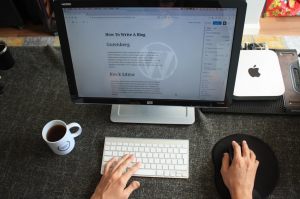
Doomscrolling, a term that gained prominence during the COVID-19 pandemic, refers to the compulsive consumption of negative news and social media content, often leading to heightened anxiety and distress. Understanding the implications of doomscrolling is crucial for maintaining mental wellness.
The Nature of Doomscrolling
Doomscrolling typically involves spending excessive time scrolling through alarming headlines and distressing news stories, which can reinforce negative thoughts and feelings.
This behaviour is often driven by a natural tendency known as negativity bias—where negative events impact us more significantly than positive ones. As individuals seek to stay informed, they may inadvertently fall into a cycle of consuming content that exacerbates their fears and anxieties.
Mental Health Impacts
The effects of doomscrolling on mental health can be profound. Research indicates that prolonged exposure to negative news can lead to increased levels of anxiety, depression, and feelings of helplessness.
Many individuals report experiencing mood changes after engaging in doomscrolling, often feeling more anxious or irritable. Additionally, this habit can disrupt sleep patterns, leading to sleep procrastination and further mood deterioration.
Social Media’s Role
Social media platforms play a significant role in perpetuating doomscrolling behaviours. Algorithms are designed to maximise user engagement by prioritising emotionally charged content, often favouring sensationalised negative news.
This creates a feedback loop where users are continuously exposed to distressing information, making it challenging to break free from the cycle.
Strategies to Combat Doomscrolling
To mitigate the negative effects of doom-scrolling, consider implementing some practical strategies:
- Set Time Limits: Designate specific times for checking news or social media, and stick to those limits.
- Curate Your Feed: Unfollow or mute accounts that frequently share negative content. Focus on sources that provide balanced perspectives or positive news.
- Practice Mindfulness: Regularly check in with your emotions while scrolling. If you notice a decline in your mood, take a break.
- Engage in Alternative Activities: Replace doomscrolling with healthier habits such as reading books, exercising, or spending time outdoors.
By being mindful of your media consumption habits and actively seeking balance, you can protect your mental health while staying informed about the world around you.
Recognizing the signs of doomscrolling is the first step toward fostering a healthier relationship with news and social media in 2025.





